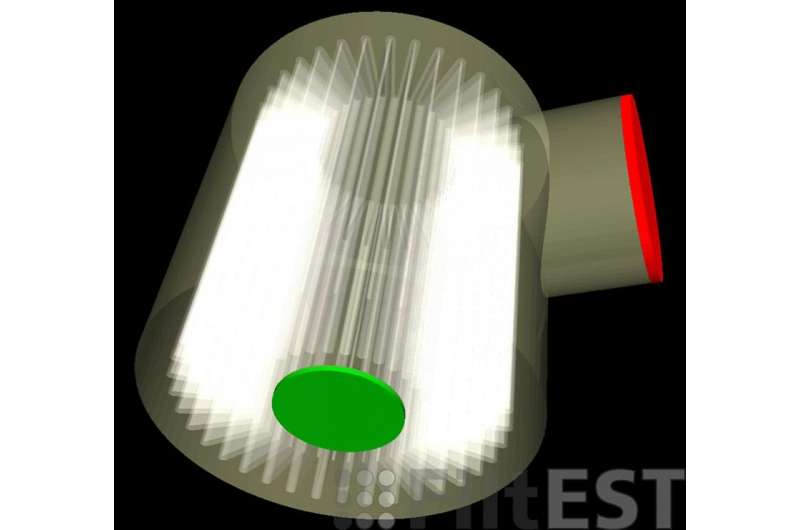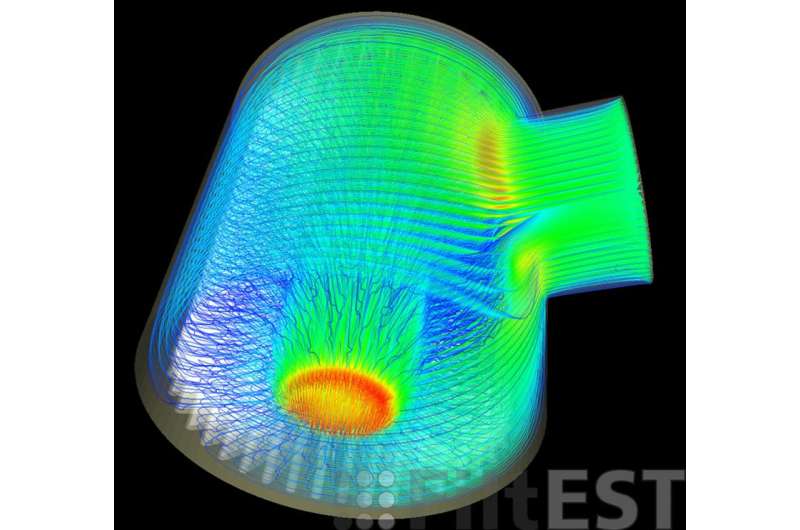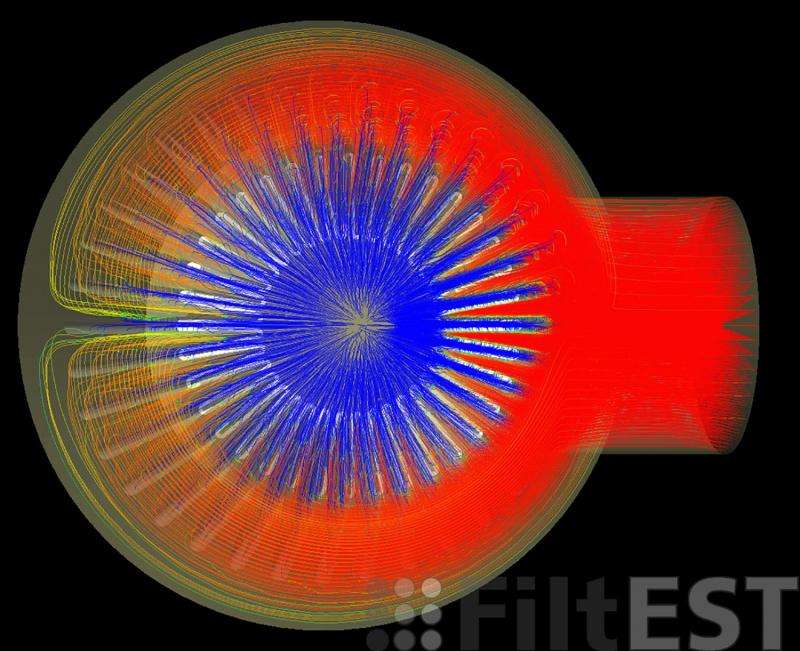Optimizing fuel filters via simulations

Filters developed for cars have to meet stricter and stricter requirements, yet they also need to be ready for the market in ever shorter periods of time. Designers caught between these two demands now have support in the form of a simulation tool: it calculates all the relevant characteristics of filter design – cleaning performance, lifetime, etc. – and thus allows efficient, cost-effective development.
Cars contain numerous filters: cabin air filters ensure that pollutants and pollen stay out of the passenger compartment, fuel filters keep solid particles from damaging the fuel circuit, and oil and transmission fluid filters clear dirt from the oil. Those who develop these filters are confronted with many demands: their products need to withstand intense temperature fluctuations and vibrations, must fit into a predefined installation space, and have to comply with increasingly stringent quality standards – all while development times get shorter and shorter.
Filter manufacturers usually source the filter material and optimize their product by varying the arrangement of pleats, the housing design, and the positioning of intake and outlet openings. From the various designs, they develop prototypes that are then tested for the desired characteristics – an expensive and labor-intensive undertaking. Computer simulations are already in use, but these often serve solely to calculate the flow through the filter. Cleaning performance or even durability – meaning the length of time before the filter has to be replaced – can thus be only roughly estimated on an empirical basis.
Simulating dynamic cleaning performance

Researchers at the Fraunhofer Institute for Industrial Mathematics ITWM are now putting an efficient simulation directly into the hands of filter developers: the "Filter Element Simulation Toolbox – FiltEST." Dr. Ralf Kirsch, a scientist at Fraunhofer ITWM, says, "Our toolbox allows developers to simulate the filtering processes themselves. This lets them make realistic statements about the cleaning performance of a particular design and predict how much dirt will accumulate over time." What sets this simulation tool apart is the option to calculate variables that cannot be simulated with standard procedures, as well as its ability to analyze how the filter's characteristics will change over time – considering, for example, that the filter will get clogged with the particles it is capturing. How quickly will the filter's effectiveness decline? How much of an impact does this have on the decrease in pressure? And what effect does this have on the filtrate?
If one wanted to calculate this pore by pore and particle by particle, the computational effort would be impossible to manage. To get around this, the researchers have resorted to a clever trick: they neither simulate every single pore in the filter medium, nor do they calculate the individual particles that pass through or remain on the filter. "Instead, we view the filter medium as a homogeneous continuum and work with particle concentrations," summarizes Kirsch. That's because for the filter manufacturer, it is of little relevance which of the many particles remain caught in the filter. All they are concerned with is how many the filter catches overall. This is precisely what these models calculate: the proportion of particles that pass through the filter medium and the proportion that stay behind. In addition, the simulation can determine how many particles are washed out again from the filter over time, as a result of flushing effects.

Anticipating filter testing
This relieves users of a massive amount of work, not to mention saving them time and money. The simulation lets them test in advance if the filters meet ISO standards – without having to build a single prototype. "Our simulation covers the majority of ISO standards," explains Kirsch. The researchers will be presenting their work at the FILTECH trade fair, October 11-13, 2016 in Cologne (Hall 11.1, Booth A9).
Provided by Fraunhofer-Gesellschaft




















